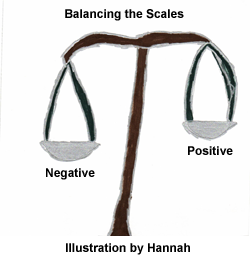 For the past few months, I have been writing on the most common steps associated with The Grieving Process for adults. Those steps are: Numbness, Denial, Bargaining, Emotions, Forgiveness, and Acceptance.
For the past few months, I have been writing on the most common steps associated with The Grieving Process for adults. Those steps are: Numbness, Denial, Bargaining, Emotions, Forgiveness, and Acceptance.
Today marks the beginning of a series of posts on Forgiveness. For many people, when they hear that word, their thoughts turn to:
- “Forgive him/her? Never! They don’t deserve to be forgiven!”
- “Forgive myself? No way will I ever be able to forgive myself for the things I’ve done!”
- “Ask forgiveness of someone I have hurt? I have never hurt anyone in my whole life!”
Sadly, these people have locked themselves into their own self-made prison. It is a prison that cripples marriages, friendships, and even chokes out a growing relationship with our Lord.
The only key that will unlock the door to this prison is forgiveness.
In the Greek, several words are used in the translation of forgiveness.
These words are: release, separate, to let something alone, to leave.
Sometimes, we need to take a look at the whole picture to get ourselves out of this self-made prison. For this reason, in this step, forgiveness will be covered in 4 different stages.
The picture of the cross reveals the 4 complete stages of forgiveness.
As you can see, those stages are:
- Experience the Forgiveness of God – Accept Jesus as Your Savior
- Forgive Others
- Forgive Yourself
- Ask Forgiveness When you are the Offender
So, I hope you will join me in this series as we take a journey around The Cross. Let’s begin today with Stage 1.
Experience the Forgiveness of God: Accept Jesus as Your Savior
Where did it all began? Why was forgiveness needed? How was this done? These questions can best be answered by briefly describing 3 relational situations that have existed between God and man since the creation of man.
First there was a friendship, then there was a separation, then friendship again. These 3 relationships can give us a picture of sinful man and the events leading up to his “Release” on The Cross at Calvary. My former pastor, the late David Berkheimer, gives the following account of these three relationships.
The Friendship
In the beginning, the world was created perfect and man was made in the image of God for friendship with Him. (Gen. 1:26; 3:8) While fellowshipping with Adam and Eve in The Garden of Eden, God gave them the keys to the whole world and said: “Be fruitful, multiply, replenish the earth, and subdue it. There’s just one thing that you can’t do. Don’t eat of The Tree of the Knowledge of Good and Evil, for in that day, you shall surely die.” Death meant a spiritual death in which there is a separation between God and man without God’s presence to live in hell through all eternity. (Gen.1:26-28; 2:17)
The Separation
Satan came along and tempted Adam and Eve to eat of The Tree of Good and Evil. As they did, sin entered the world, causing the separation from God, and the perfect environment. (Gen. 3:1-4) Adam’s sin was imputed into every human thereafter, thus making all men to be born with the guilt of Adam and a bent toward sin. (Rom. 1:18; 3:23; 5:12)
Friendship Again
Man was now separated from God with no way in his power to restore the friendship. However, God moved quickly to reestablish the friendship. The first thing He did was kill an animal and “covered” Adam and Eve’s nakedness and shame with the skin from the animal. (Gen. 3:21)
The slaying of the animal was the beginning of the sacrificial system that was practiced throughout the history of Israel. It was a reminder that the penalty for sin is death. However, instead of the sinner being put to death, an animal was put to death denoting that man’s sins were “covered.” (Lev.1:1-4; 6:6-7)
This system allowed men and women to carry on a friendship with God again, but it did not provide a permanent solution to the sin problem. Why? Because God’s character is holy and sinful man are incompatible. God could not just “cover-up” sin. Some type of justice had to be served.
This is where Jesus entered the picture.
JUSTICE: The depth of God’s love for mankind is revealed by the extreme action for justice that He used. He gave His son, Jesus, to be the propitiation for our sins. (1 John 4:9-10)
Propitiation means that the wrath of someone who has been unjustly wronged has been satisfied. All God’s righteous wrath for sinful man was poured out on Jesus. It removed God’s anger from man.
To get the full impact of what Jesus did for us, think about The Prodigal Son. When the Prodigal Son came back, his father didn’t make him a servant, he gave him back everything. The older brother didn’t understand that. He didn’t mind him coming home, but he didn’t understand his father giving him back everything.
If the Prodigal Son had received a lower status, the other son would probably have not gotten mad. But the Father didn’t just pardon him, He brought him into fellowship—now you are one of the family.
And that’s the way it is with us. He didn’t just pardon us, He released us, which in essence says two things:
- You don’t owe me. My son, Jesus paid your sin debt in full. Justice has been served. It’s just as though you never sinned.
- I also restore your full privileges as my child.
This Friendship (Reconcilation) Must be Received
The ball was now back in man’s court. The work was finished; now man must receive this spiritual birth and enter into fellowship with God through his son Jesus.
And that, my friend, is where we make it so hard. Years sometimes pass before one receives God’s Friendship (Reconcilation) and accepts Jesus Christ as their Savior. Why? I guess people have all kinds of excuses like I did.
I had grown up in church, but it wasn’t until I was in my late 20’s that I accepted Jesus as my Savior. But I found, it is really so simple to do.
Listen in to this conversation.
“I want to ask Jesus into my heart,” the little girl told her older sister who had just finished telling her the story of Jesus on The Cross. My heart raced as I sat listening to Crystal, 9 years old, lead her bouncy 5 year old sister, Heather, to the Lord. When the prayer for salvation had been completed, Crystal told her little sister: You know what, Heather? The Angels in Heaven are singing like crazy!”
Many years later, tears still come to my eyes as I recall the memory of watching my two little girls fellowshipping with God.
If you have never accepted Jesus Christ as your Savior—
Why not in childlike faith ask
Jesus into your heart
and —
Let the angels sing for you!
God’s Plan of Salvation:
- All have sinned and come short of the glory of God – Romans 3:23
- Believe on the Lord Jesus Christ and thou shalt be saved and thy house – Acts 16:31
- If we confess our sins, he is faithful and just to forgive us our sins and to cleanse us from all unrighteousness – 1 John 1:9
Prayer: “Lord Jesus, I know you love me, because you died on the cross bearing my sins. Thank you, Lord, for revealing to me my lost, sinful condition. I confess that I am a sinner, dead in sin, and cannot save myself. I do now by faith, gladly accept you as my personal Savior, and thank you, Lord, for eternal salvation. Amen.”
Join Hannah and me next week as we keep traveling around The Cross to Forgiving Others. Hold onto your seats; we are in for a ride, howbeit a good ride.














